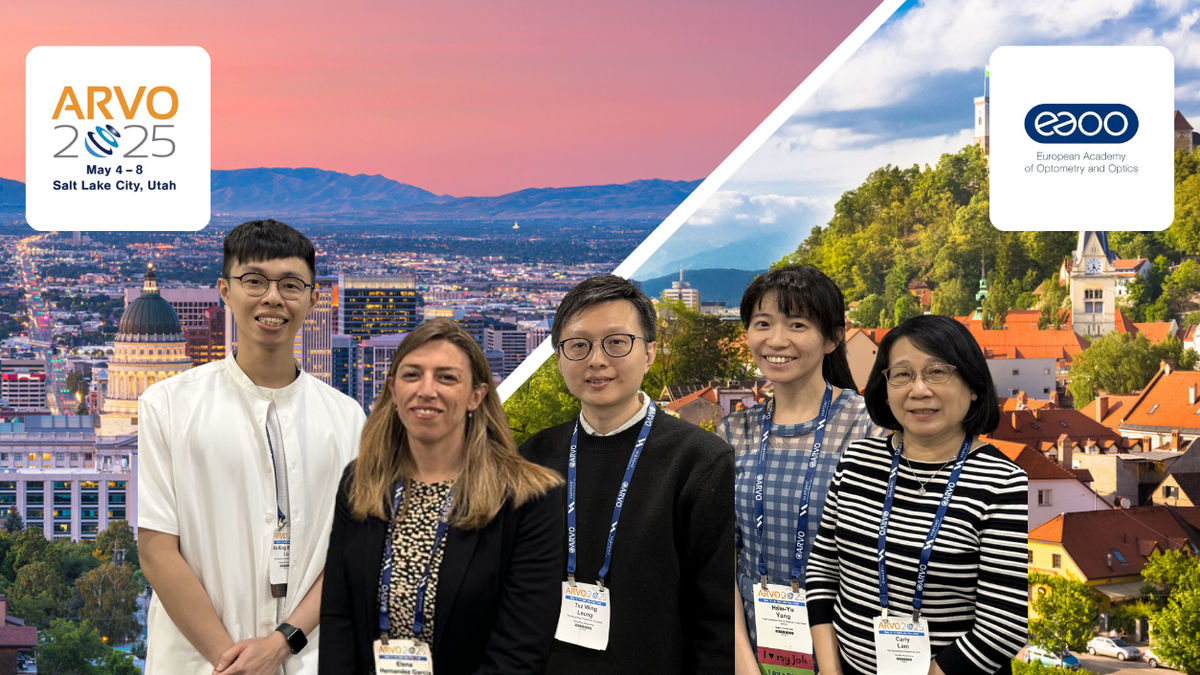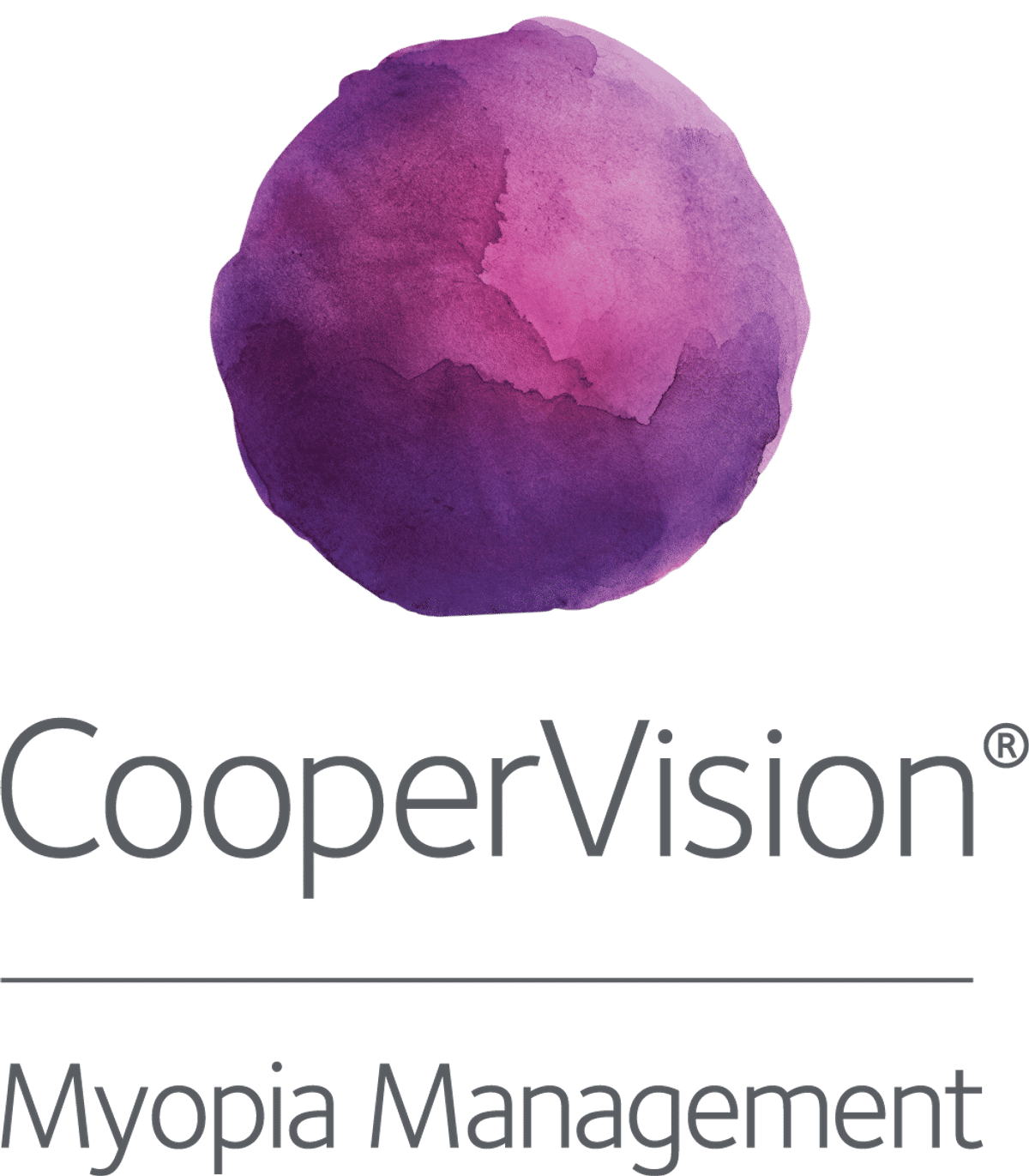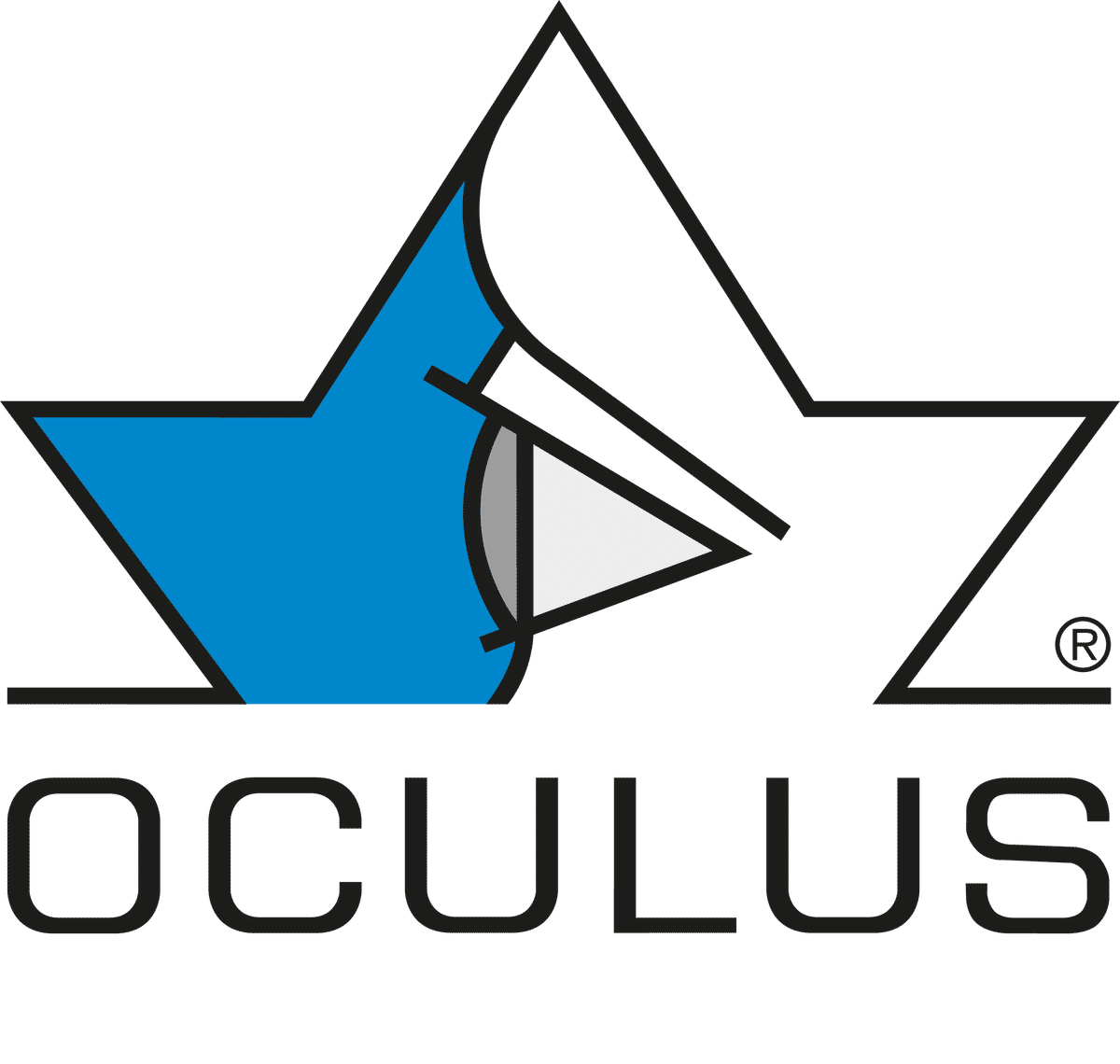Science
Unlocking Innovation: New Insights into MiYOSMART Spectacle Lenses from HOYA Vision Care

Sponsored by
In this article:
This article provides a summary of key presentations by HOYA Vision Care delivered at ARVO and EAOO 2025.
- Eight Year MiYOSMART Data
- (DIMS) Spectacle Lenses for Eight Years versus Shorter Durations
- Efficacy of Defocus Incorporated Multiple Segments (DIMS) Lenses in Retarding Myopic Shifts Among Pre-Myopic Preschoolers: Nine-Month Results of a Pilot Study
- Atropine and Spectacle lens Combination Treatment (ASPECT): 12-month results of a randomised controlled trial for myopia control using a combination of Defocus Incorporated Multiple Segments (DIMS) lenses and 0.025% atropine
- Vision-related quality of life in myopic children using combination treatment with atropine and DIMS (Defocus Incorporated Multiple Segments) spectacle lenses: 12-month results
- Evaluation of the Visual Performance of Two Modified Defocus Incorporated Multiple Segments (DIMS) Spectacle Lens Designs
- Review of the role of accommodation and binocular vision in myopia onset and progression
- Influence of Different Types of Astigmatism on Myopia Progression in Children Wearing Defocus Incorporated Multiple Segments Spectacles
- Prevalence of amblyogenic risk factors in young Scottish children, and variations across quintiles of deprivation – implications for vision screening programmes
The HOYA MiYOSMART spectacle lens was one of the pioneering myopia management solutions that paved the way for widespread adoption of evidence-based interventions in clinical practice. Since its initial launch, a growing body of research has continued to validate its effectiveness and safety and expand our understanding of its performance across diverse patient populations. At this year’s Association for Research in Vision and Ophthalmology (ARVO) held in Salt Lake City, USA and European Academy of Optometry and Optics (EAOO) held in Ljubljana, Slovenia, new findings were presented that offer deeper insights into long-term outcomes, novel applications, and atropine combination treatment involving Defocus Incorporated Multiple Segments (DIMS) spectacle lenses. This article highlights the key research updates.
Pictured are authors: Kenneth Ka King Liu, Elena Hernandez Garcia, Tsz Wing Leung, Hsin-Yu Yang and Carly Lam.
Comparison of Myopia Progression in Individuals Wearing Defocus Incorporated Multiple Segments (DIMS) Spectacle Lenses for Eight Years versus Shorter Durations
Authors: Tsz Wing Leung (1,2), Carly S. Y. Lam (1,2), Han Yu Zhang (3,4), Mui Yee Kwok (1), Kenneth Liu (1,2), Fangyu Xu (2), Ka Mei To (2), Natalia Vlasak (5)
- Centre for Myopia Research, School of Optometry, The Hong Kong Polytechnic University, Hong Kong
- Centre for Eye and Vision Research Limited, Hong Kong
- School of Medicine, Nankai University, Tianjin, China
- Eye and Vision Science Research Institute of Nankai University, China
- Research and Development, HOYA Vision Care, Netherlands
Summary
This analysis from an eight-year follow-up clinical study evaluated the impact of long-term versus shorter-term use of Defocus Incorporated Multiple Segments (DIMS) spectacle lenses on myopia progression. Among 67 participants, those who wore DIMS spectacle lenses continuously for eight years (n=11) experienced significantly less myopia progression (-0.44 ± 0.64D) and axial elongation (0.46 ± 0.64 mm) compared to those with shorter durations of wear (n=56), who showed -1.44 ± 1.31D and 0.88 ± 0.56 mm, respectively.
Read the full abstract here.
European Observational Study of Defocus Incorporated Multiple Segments (DIMS) spectacle lenses in UK children: 2-year results
Authors: K. J. Saunders (1), J. M. Fulton (1), S. J. McCullough (1), P. Richardson (1), N. S. Logan (2), Y. Whayeb (2), P. Williamson (2), H. Barr (3), M. Nagra (3), S. Pardhan (3), N. Vlasak (4)
- Centre for Optometry & Vision Research, Ulster University, Coleraine, Northern Ireland, United Kingdom
- School of Optometry, Aston University, Birmingham, England, United Kingdom
- Vision & Eye Research Institute, School of Medicine, Anglia Ruskin University, Cambridge, England, United Kingdom
- HOYA Vision Care, Amsterdam, The Netherlands
Summary
This multi-site observational study evaluated the 2-year effectiveness of DIMS spectacle lenses in slowing myopia progression in 103 UK children aged 5 to 15 years. Participants with myopia ranging from -0.50D to -8.50D, anisometropia of 1.50D or less, and astigmatism of 2.50D or less were monitored for changes in spherical equivalent and axial length at 6-month intervals. Over two years, mean SE progression was -0.56D and AL elongation was 0.29 mm, with slower eye growth observed in 81% of participants in the first year and 87% in the second, compared to virtual single vision spectacle lens controls. A matched subgroup of UK children (aged 8–13 years, SE −1.00 to −5.00D, astigmatism ≤1.50 D; n = 59) demonstrated no statistically significant differences in two-year cumulative myopia progression when compared to a Chinese cohort from a prior study.
Read the full abstract here.
Efficacy of Defocus Incorporated Multiple Segments (DIMS) Lenses in Retarding Myopic Shifts Among Pre-Myopic Preschoolers: Nine-Month Results of a Pilot Study
Authors: Hsin-Yu Yang (1,2), Der-Chong Tsai (2,3)
- Department of Ophthalmology, Taipei Veterans General Hospital, Yuan-Shan and Su-Ao Branch, Yilan, Taiwan
- Department of Ophthalmology, National Yang Ming Chiao Tung University Hospital, Yilan, Taiwan
- School of Medicine, National Yang Ming Chiao Tung University, Taipei, Taiwan
Summary
This nine-month pilot study investigated the potential of DIMS spectacle lenses to slow refractive change in pre-myopic preschoolers aged 5 to 6 years. Twenty-four children with cycloplegic refractions between +0.75D and –0.50D wore plano photochromic DIMS spectacle lenses, with monitoring of SER, AL, and central choroidal thickness (CCT) every three months. The average SER remained stable over the study period (+0.375D to +0.432D), while AL increased modestly but significantly (22.48 mm to 22.64 mm). CCT showed no significant change. Compared to a larger control group showing an annual myopic shift of -0.15D, the DIMS group exhibited a +0.06D change. Average wear time was high at 74%, and although increased wear showed a mild association with more stable refraction, this was not statistically significant. This study is important because it provides early evidence that DIMS spectacle lenses may help delay the onset of myopia in pre-myopic preschool children, a critical opportunity for early intervention that could reduce long-term myopia risk and progression.
Read the full abstract here.
Atropine and Spectacle lens Combination Treatment (ASPECT): 12-month results of a randomised controlled trial for myopia control using a combination of Defocus Incorporated Multiple Segments (DIMS) lenses and 0.025% atropine
Authors: Noemi Guemes-Villahoz (1,2), Paula Talavero-Gonzalez (1), Paloma Porras-Angel (1,2), Rafel Bella-Gala (3), Alicia Ruiz-Pomeda (3), Beatriz Martin-Gonzalez (3), Elena Hernandez-Garcia (1), Carmen Nunila Gomez-de-Liano (3), Rakhee Shah (4,5), Julian Garcia-Feijoo (1,2), Rosario Gomez-de-Liano (1,2)
- Ophthalmology, Hospital Clinico San Carlos, Madrid, Comunidad de Madrid, Spain
- Complutense University of Madrid, Ramón Castroviejo Institute for Ophthalmological Research, Madrid, Spain
- Universidad Complutense de Madrid, Madrid, Spain
- Department of Optometry and Visual Sciences, City St George’s, University of London, London, United Kingdom
- HOYA Vision Care, Amsterdam, Netherlands
Summary
The ASPECT trial is the first randomized controlled study to evaluate the combined use of 0.025% atropine eye drops and DIMS spectacle lenses for myopia control. Conducted over 12 months, the study included 102 children aged 4 to 16 years with moderate myopia. Participants were assigned to one of two treatment groups: atropine with SV spectacle lenses or atropine with DIMS spectacle lenses. Children who received the combination of atropine and DIMS spectacle lenses showed a significantly smaller increase in axial length (0.07 ± 0.16 mm) compared to those using atropine with SV spectacle lenses (0.18 ± 0.16 mm). Although refractive progression was also slightly lower in the combination group (-0.09 ± 0.35D vs. -0.19 ± 0.42D), the difference was not statistically significant. Importantly, nearly 40% of children in the combination group had no axial elongation after 12 months, compared to just 12% in the SV group. These findings suggest that combining low-dose atropine with DIMS spectacle lenses offers enhanced control of axial elongation, making it a promising combination treatment approach for managing myopia.
Read the full abstract here.
Pictured is first author Elena Hernandez Garcia.
Authors: Elena Hernandez Garcia (1), Noemi Guemes-Villahoz (1), Carmen Nunila Gomez-de-Liano (1), Paula Talavero-Gonzalez (1), Paloma Porras-Angel (1), Alicia Ruiz-Pomeda (1), Rafel Bella-Gala (1), Beatriz Martin-Gonzalez (1), Julian Garcia-Feijoo (1), Rosario Gomez-de-Liano (1)
- Hospital Clinico San Carlos, Madrid, Community of Madrid, Spain
Summary
This 12-month longitudinal study assessed vision-related quality of life (VR-QoL) in myopic children undergoing treatment with 0.025% atropine eye drops alone or in combination with DIMS spectacle lenses. Ninety children aged 4 to 16 years were included—48 received atropine with single-vision spectacle lenses, and 42 received atropine with DIMS spectacle lenses. VR-QoL was evaluated using the Children’s Visual Function Questionnaire (CVFQ) and Pediatric Eye Questionnaire (PedEyeQ) at baseline and after one year. While general vision and competence scores on the CVFQ were slightly better in the combination group, overall VR-QoL differences between groups were not statistically significant. Both groups showed significant improvements over time in visual function and social valuation domains on the PedEyeQ. This study shows that combining DIMS spectacle lenses with low-dose atropine does not negatively impact vision-related quality of life in children and may offer additional perceived visual benefits, supporting the combination as a well-tolerated treatment option for myopia management.
Read the full abstract here.
Evaluation of the Visual Performance of Two Modified Defocus Incorporated Multiple Segments (DIMS) Spectacle Lens Designs
Pictured are Kenneth Liu (left) and Carly Lam (right).
Authors: Carly S. Y. Lam (1,2), Kenneth Liu (1,2), Han Yu Zhang (3,2), Hua Qi (4), Keigo Hasegawa (4), Shohei Matsuoka (4), Ka Yan Leung (1), Dennis Yan-yin Tse (1,2), Chi Ho To (1,2)
- Centre for Myopia Research, School of Optometry, The Hong Kong Polytechnic University, Hong Kong, China
- Centre for Eye and Vision Research Limited, Hong Kong, Hong Kong
- School of Medicine, Nankai University, Tianjin, China
- Vision Care Section, Technical Research and Development Department, HOYA Corporation, Tokyo, Japan
Summary
This study evaluated the visual performance of two modified DIMS spectacle lens designs (D1 and D2), which featured changes to the central optical zone and increased defocus power and area. In a prospective crossover design, 38 participants wore DIMS, D1, D2, and SV spectacle lenses for one week each, with assessments of visual acuity (VA), stereopsis, heterophoria, accommodation, and subjective visual symptoms. Visual performance was largely comparable across lenses, with no significant differences in distance VA. However, the D2 spectacle lens, which had a smaller central zone, showed slightly reduced near VA under both high-contrast (0.04 logMAR) and low-contrast conditions compared to SV spectacle lenses. Symptoms such as difficulty focusing were reported more frequently with DIMS, D1, and D2 than with SV, although the overall frequency and intensity of symptoms were similar. By showing that modified DIMS spectacle lens designs can preserve overall visual function despite the modifications aimed at enhancing myopia control, this study supports the feasibility of optimizing spectacle lens designs to improve treatment efficacy without compromising visual comfort or performance.
Read the full abstract here.
Review of the role of accommodation and binocular vision in myopia onset and progression
Authors: Bruce J. W. Evans (1), Rakhee Shah (1,2)
- Optometry & Visual Sciences, City St George’s, University of London
- HOYA Vision Care, Amsterdam
Summary
This comprehensive literature review explored the potential role of accommodation and binocular vision in the onset and progression of myopia. A total of 108 relevant studies were reviewed, including findings from major studies such as the CLEERE study. Evidence suggests that accommodative dysfunction—such as increased accommodative lag and altered AC/A ratios—may precede myopia onset and contribute to hyperopic defocus. Some children also show increased near esophoria around the time of onset, likely secondary to accommodative changes. However, these factors appear to have limited influence on progression, as the magnitude of accommodative lag does not correlate with myopia progression rate, and interventions targeting these systems (e.g. progressive addition lenses) show only modest efficacy. While earlier reviews, including the 2021 IMI report, downplayed the role of these visual functions,
Read the full abstract here.
Influence of Different Types of Astigmatism on Myopia Progression in Children Wearing Defocus Incorporated Multiple Segments Spectacles
Authors: Jenna Hoogendoorn (1), Rakhee Shah (2,3), Natalia Vlasak (2)
- Vrije Universiteit Amsterdam, the Netherlands
- HOYA Vision Care, Amsterdam, the Netherlands
- Department of Optometry and Visual Sciences, City St George’s, University of London, London, England, UK
Summary
This study explored how different types of astigmatism may influence myopia progression in children wearing DIMS spectacle lenses. Data from 184 children—79 Asian and 105 European—were analysed over a 24-month period, with refractive errors categorized as spherical, with-the-rule (WTR), oblique, or against-the-rule (ATR) astigmatism. Changes in spherical equivalent refraction (SER) and axial length (AL) were measured. While one-way ANOVA showed no statistically significant differences in progression between astigmatism types, trends indicated that children with WTR astigmatism experienced the least myopia progression, whereas those with ATR astigmatism showed the greatest. These findings, observed across both populations, suggest that the type of astigmatism may influence treatment response in myopia management with DIMS spectacle lenses.
Read the full abstract here.
Prevalence of amblyogenic risk factors in young Scottish children, and variations across quintiles of deprivation – implications for vision screening programmes
Authors: Benjamin Edward William Evans (1), Lee Pentland (2), David F. Edgar (1), Rakhee Shah (3,1), Bruce J. W. Evans (1), Miriam L. Conway (1)
- Department of Optometry and Visual Sciences, City St George’s, University of London, London, United Kingdom
- Ophthalmology Department, Ninewells Hospital, NHS Tayside, Dundee, Scotland, United Kingdom
- HOYA Vision Care, Amsterdam, Netherlands
Summary
This retrospective epidemiological study assessed the prevalence of amblyogenic risk factors (ARFs) in young Scottish children before and after the COVID-19 lockdowns and examined how these risks varied across socioeconomic deprivation levels. Data from Scotland’s national vision screening programme, covering approximately 85% of children aged 3.5 to 5.5 years (40,000–50,000 annually), were analysed across five academic years (2013–2016, 2020–2022) using AAPOS criteria. Results showed no significant change in the overall prevalence of ARFs over time, remaining between 4.61% and 5.19%. However, socioeconomic disparities were evident: in 2021/22, children in the most deprived areas were 1.6 times more likely to be referred for further assessment compared to those in the middle deprivation quintile, while children in the least deprived areas had a lower likelihood of referral (odds ratio 0.74). This study confirms the stability of amblyogenic risk factor prevalence in young children despite COVID-19 disruptions, while also revealing persistent socioeconomic disparities—emphasizing the critical role of universal vision screening in ensuring early detection and equitable eye care access across all socioeconomic groups.
Read the full abstract here.
Read the full collection of abstracts from HOYA presented at ARVO 2025 here and EAOO 2025 here.
Meet the Authors:
About Jeanne Saw
Jeanne is a clinical optometrist based in Sydney, Australia. She has worked as a research assistant with leading vision scientists, and has a keen interest in myopia control and professional education.
As Manager, Professional Affairs and Partnerships, Jeanne works closely with Dr Kate Gifford in developing content and strategy across Myopia Profile's platforms, and in working with industry partners. Jeanne also writes for the CLINICAL domain of MyopiaProfile.com, and the My Kids Vision website, our public awareness platform.
References
- Lam CSY, Tang WC, Tse DY, Lee RPK, Chun RKM, Hasegawa K, Qi H, Hatanaka T, To CH. Defocus Incorporated Multiple Segments (DIMS) spectacle lenses slow myopia progression: a 2-year randomised clinical trial. Br J Ophthalmol. 2020 Mar;104(3):363-368.
- Wolffsohn JS, Jong M, Smith EL 3rd, Resnikoff SR, Jonas JB, Logan NS, Morgan I, Sankaridurg P, Ohno-Matsui K. IMI 2021 Reports and Digest - Reflections on the Implications for Clinical Practice. Invest Ophthalmol Vis Sci. 2021 Apr 28;62(5):1.
- National Academies of Sciences, Engineering, and Medicine; Division of Behavioral and Social Sciences and Education; Board on Behavioral, Cognitive, and Sensory Sciences; Committee on Focus on Myopia: Pathogenesis and Rising Incidence. Myopia: Causes, Prevention, and Treatment of an Increasingly Common Disease. Washington (DC): National Academies Press (US); 2024 Sep 17.
Enormous thanks to our visionary sponsors
Myopia Profile’s growth into a world leading platform has been made possible through the support of our visionary sponsors, who share our mission to improve children’s vision care worldwide. Click on their logos to learn about how these companies are innovating and developing resources with us to support you in managing your patients with myopia.












